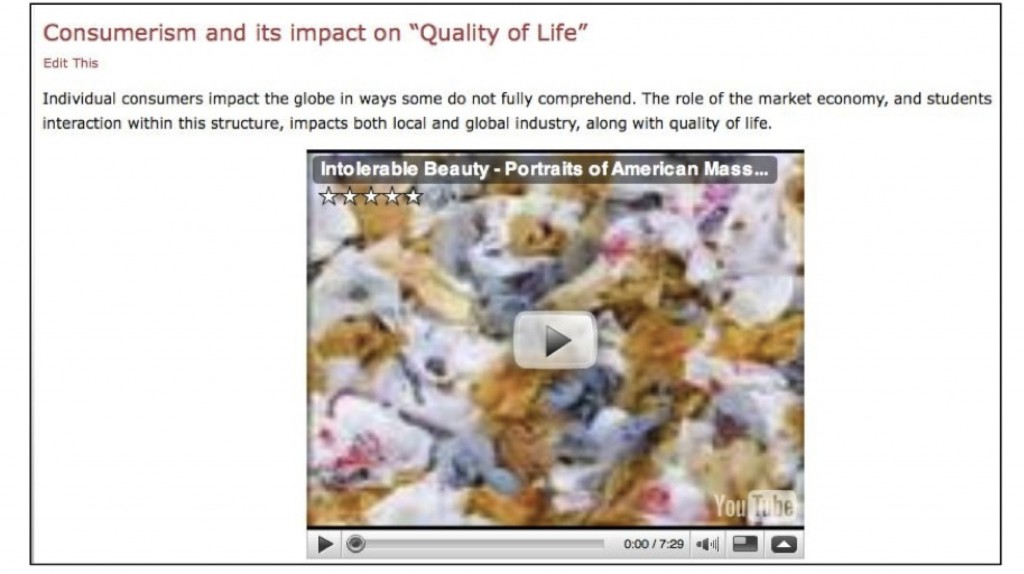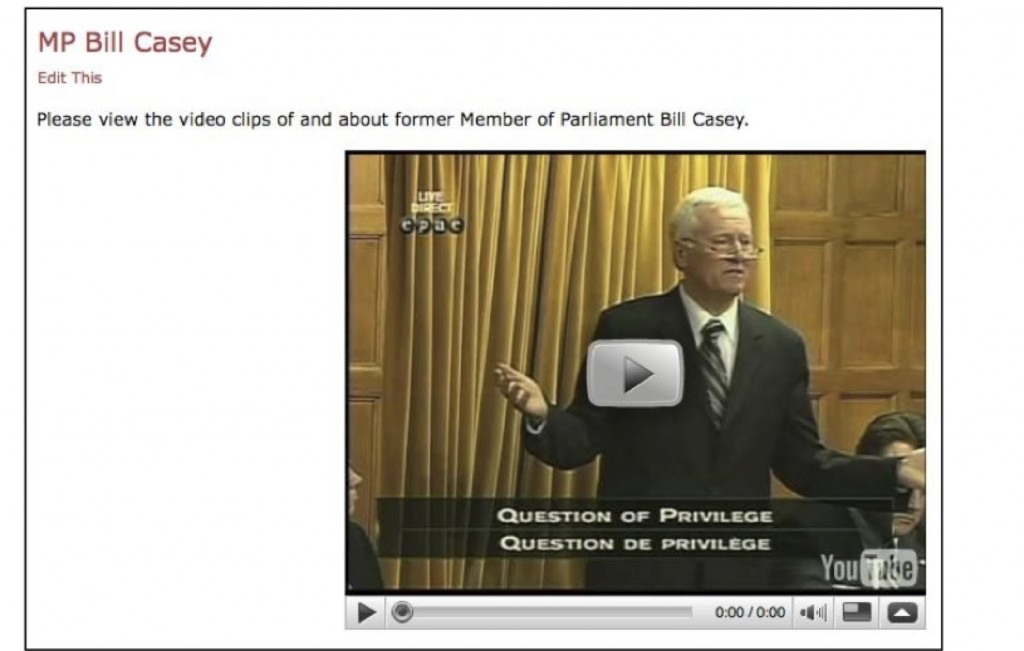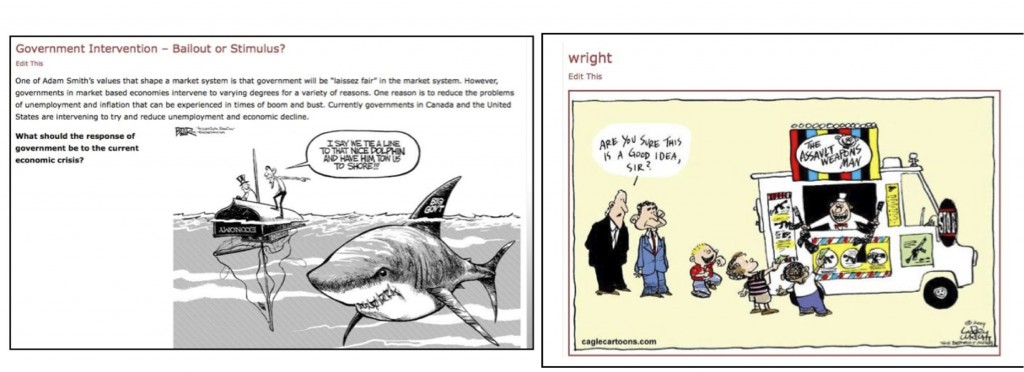The role of digital technologies is ubiquitous in every aspect of the modern Canadian educational system and the opportunities to support student learning with modern technologies is staggering in scope. As such, recently federal and provincial governments have allocated considerable public spending towards technology infrastructure in an attempt to meet the needs of learners and to keep Canadian citizens competitive in a 21st century, information economy. In their Statistics Canada study, Beattie and Plante (2004) indicate that most schools in Canada are connected to the internet and that administrators in those schools believe technology has the power to greatly impact student learning. The price tag of this investment also indicates the significance governments place on educating citizens for a technology society. In the province of Alberta in support of integration of technology into Alberta’s classrooms, the government committed $18.5 million/year in new funding each of the past three years. This is in addition to the $36 million in ongoing support earmarked for technology (Alberta Education, 2008). As an educator I am curious about the increasing impact that technology has on instruction and learning and I am compelled to provide students in my care with the knowledge, skills, and experiences that will assist them in positive and productive use of technology in their lives and livelihoods. Thus, an ongoing theoretical foundation informing my recent instructional planning and design has been the role of technology in providing differentiated instruction and how to capitalize on the potential multiliteracies of ‘digital natives.’ Considering this with recent research on digital literacy and multiliteracies (The New London Group, 1996; Cope & Kalantzis, 2006; Dobson & Willinsky, 2009), what follows is some critical reflection on the implications of mulitieracies for student engagement and reflections of a practical example where educational design attempts to consider this pedagogy.
In his video production, A Vision of Students Today (2007), Wesch articulates and then later blogs about the lack of engagement experienced by students in the education system. The viewer is presented with overcrowded classrooms where the learners and their learning environment are woefully out of synch in many ways. The environment, according to Wesch, is a relic of a previous era where knowledge and information were in the hands of an authority whose job it was to impart this wisdom to others. Meanwhile, the learners now arriving in these environments understand deeply and intuitively that knowledge and information can be accessed anywhere and anytime and is constantly being made or remade in a network of discussion and discourse. Unfortunately the underlying message here is that when they arrive at ‘school’ this real world experience of meaning making is being suppressed and hindered by outdated structures and practices. Although, presented from an American post secondary institution perspective this picture of student disengagement is being examined and addressed internationally by educators at all levels.
From a Canadian middle school and secondary school perspective this notion of disengagement is supported by recent data and has been the focus of professional growth in the current school division in which I work. In a summary report from their “What Did You Do in School Today?” (WDYDIST) research Willms, Friesen & Milton (2009) point to data that illustrates low levels of academic engagement, even lower levels of intellectual engagement and a pattern of steady decline in overall engagement throughout middle and secondary school. School division efforts to address this engagement issue, raised by the likes of Wesch and the authors of WDYDIST, are facilitating Professional Learning Communities where staff are collaborating in an effort to intentionally design engaged learning environments and tasks for all learners. A vision for learning representation (see fig. 1) from Foothills School Division, illustrates the centrality of engagement to the vision for learning in this division.

Fig. 1
The idea of reaching all learners at the center of this diagram is generally common among many public schools and public school jurisdictions. Further, it is implicit that the idea of all students comprises an increasing diversity of learners in terms of cultures, abilities, strengths, challenges, attitudes, and learning styles. Moreover, teachers and other educational staff increasingly understand that students in their care learn in different ways and at different rates. It is in this pursuit of engaged learning environments, for all learners, where an understanding of Multiliteracies can support quality educational design and capitalize on the competencies of digital natives. In their pioneering work on the concept of Multiliteracies, The New London Group (1996), recognize that rapid change and advances in all areas of citizen’s lives outside of school has meant that students are increasingly arriving at the school setting having been immersed in social environments supported by rich meaning making technologies and divergent literacies. Further, they suggest that, although students understand a diversity of representational modes they are likely to find roadblocks to engaged learning in a system that can seem structured on a one size fits all design. Thus the New London Group posit a strong case to develop a ‘multiliteracies’ based pedagogy in an effort meet the needs of diverse learners.
In their look at the ‘why ‘ and ‘how of multiliteracies’ The New London Group authors call for a student centered constructivist model of education where learners are situated in structured communities of practice, guided by clear curricular outcomes, and supported in an environment of mutual discourse and negotiated meaning making. This constructivist pedagogical approach is consistent with the work of many educational researchers and is put forth by these authors as being relevant and reflective of the actual life worlds that students will or already do find themselves living in. To make this point they explore and draw attention to the rapid technological changes, evolving interconnectedness, and increasing cultural and linguistic diversity in various situated environments including working life, public life, and private lives of citizens that is resulting in the need for understanding and fluency in new and increasingly multifaceted literacies. Dobson and Willinksi (2009) echo this idea and point out that literacy is not simply a skill to be acquired but a “set of complex characteristics and processes that influence and are influenced by social context and personal circumstance.” (p.14-15).
The concept of multiliteracies and the need for an instructional approach that considers this is something that is reflected in my own design for learning with middle school social studies students. One example where this can be seen is in the recent design of a course blog to engage students in issues facing Canadians. The design included a main page where students were introduced to blogging and connections to course content through text and video based instructions from myself (see fig. 2). Five issue pages were designed to support the curricular content with an additional page added to offer reflections after a visit from a Member of Parliament who, in conversation with students, discussed many of the related issues. Additional links to student-familiar websites including news sources, editorial cartoon collections, and blogs were also posted from this main page. Further instructions and assessment guidelines were provided to students in digital and hard-copy form.

(fig. 2: Screen shot from main page of SS9 course blog)
Each issue page included a variety of links and robust web based resources to engage students in the discourse and capitalize on the multiliteracies that many students living in a digital age arrive at the learning environment empowered with (New London Group, 1996). Hence, links to rich audio, video (see fig. 3a & 3b), text, and images (see fig.4) were supported on each of the issue pages to prompt discussion. Still, it cannot be expected that all learners will arrive in the learning environment with similar levels of digital fluency and literacy. Du and Wagner (2006) acknowledged that students needed time to adjust to the practice of blogging, suggesting that students may not be as fluent in such discourse as many researchers suggest. Thus, during the introduction to this learning design students were guided through the blog site and at times viewed and discussed the material hosted on the site in a collaborative full group discussion and informal debate forum.

(fig. 3a: example of video content examining mass consumption)

(fig.32b: video content of MP who visited students during course of study)

(fig 4: examples of text and image content to prompt discussion in course blog)
The design for learning required students (as a minimum) to make an original post, make one comment on the remarks or ideas of another student on each of the individual issue pages, and respond to any questions asked by classmates or teachers. In previous current events issue exploration students submitted a six-week log with summary, analysis, and opinion of self-chosen articles and editorial cartoons with one weekly period devoted to discussion of the issues. This often resulted in only a few students having the opportunity to offer their ideas and opinions with the group during discussion. Limited feedback to students occurred during the weekly discussion periods and after I had completed assessing the logbooks in each term, providing little or no opportunity for students to respond to feedback from peers or myself. The process to explore issues through blog technology realized several of the potential affordances expressed in the academic literature as well as my intent to increase the critical thinking and overall level of student discourse. A summative task was also designed where students groups were to choose a relevant issue, take a position on the issue, and demonstrate their position to their classmates using a digital technology of their choice. These digital artifacts were posted to the course blog and presented by students in class. Further, students were required to provide critical feedback to all collaborative group projects.
That students were engaged through this design for learning was clearly evident. 100 % of students completed the minimum requirements at a proficient level and more than 70% of students went well beyond the requirements for posting. As well this students were given enough classroom based time to complete this work while in the school, yet many posted and digitally collaborated after school hours. It is clear that if we want to engage and capitalize on the increasingly diverse literacies of students we must design our educational environments to be reflective of this.
References:
Alberta Education 2008-2011 Business Plan. Available at: http://www.education.gov.ab.ca/department/businessplan/ . Retrieved November 7, 2010, from http://www.education.gov.ab.ca/department/businessplan/
Beattie, D., Plante, J. (2004). Connectivity and ICT integration in Canadian elementary and secondary schools: First results from the Information and Communications Technologies in Schools Survey, 2003-2004. Statistics Canada. Education, skillsand learning – Research papers. Retrieved November 10, 2010, from http://sc.gc.ca/cgi-bin/downpub/listpub.cgi?catno=81-595-MIE2004017
Cope, B., Kalantzis, M. (2008). ‘Multiliteracies’: new literacies, new learning. Newlearning: Transformation designs for Pedagogy and Assessment. Retrieved November 8, 2010. ETEC 540 course materials.
Dobson, T., Willinsky, J. (2009) Digital Literacy. Retrieved November 8, 2010. ETEC 540 course materials.
Ellison, N.B., & Wu, Y. (2008) Blogging in the classroom: a preliminary exploration of student attitudes and impact on comprehension. Journal of Educational Multimedia and Hypermedia . 17 (1), 99-122. Retrieved November 4, 2010, from ERIC (EBSCO) database.
New London Group. (1996). A pedagogy of multiliteracies: designing social futures. Harvard Educational Review. 66 (1), 1-26.
Wesch. M. (2007) A vision of students today. Retrieved November 8, 2010. ETEC 540 course materials.
Willms, D., Milton, P., Friesen, S. (2009) What did you do in school today?: transforming classrooms through social, academic and intellectual engagement. Canadian Education Association.









